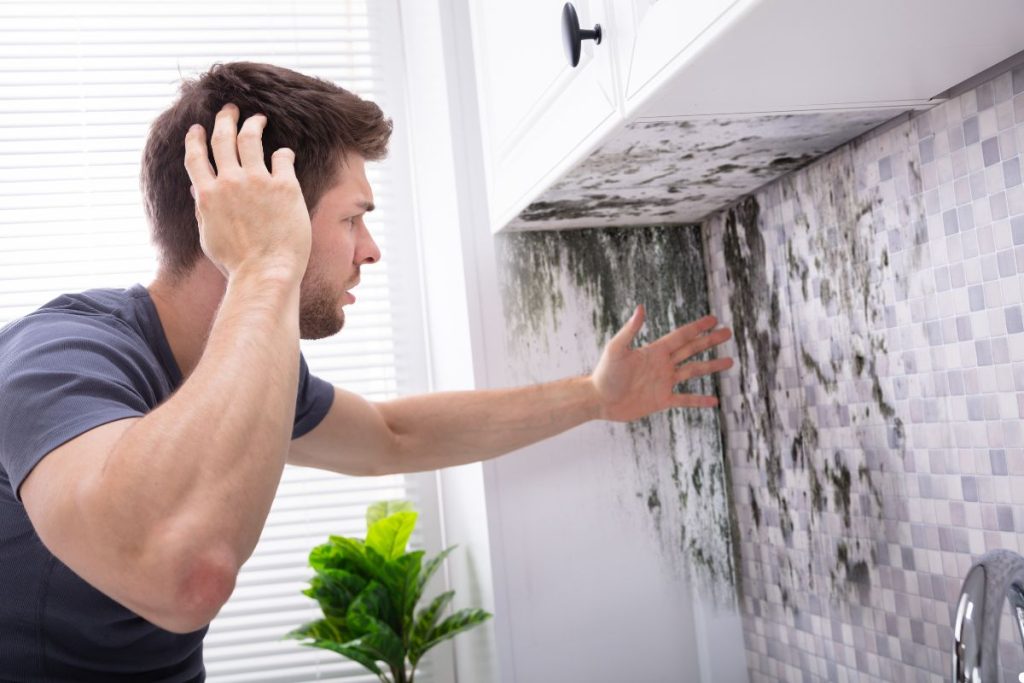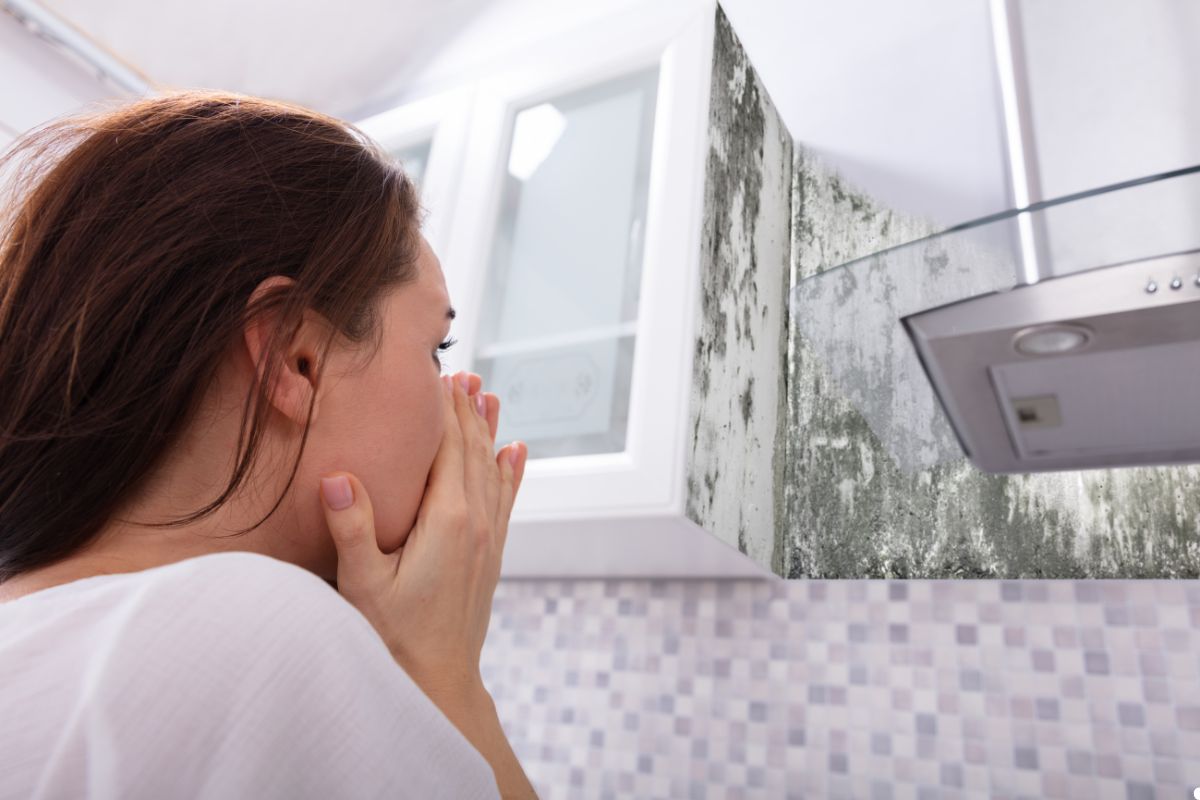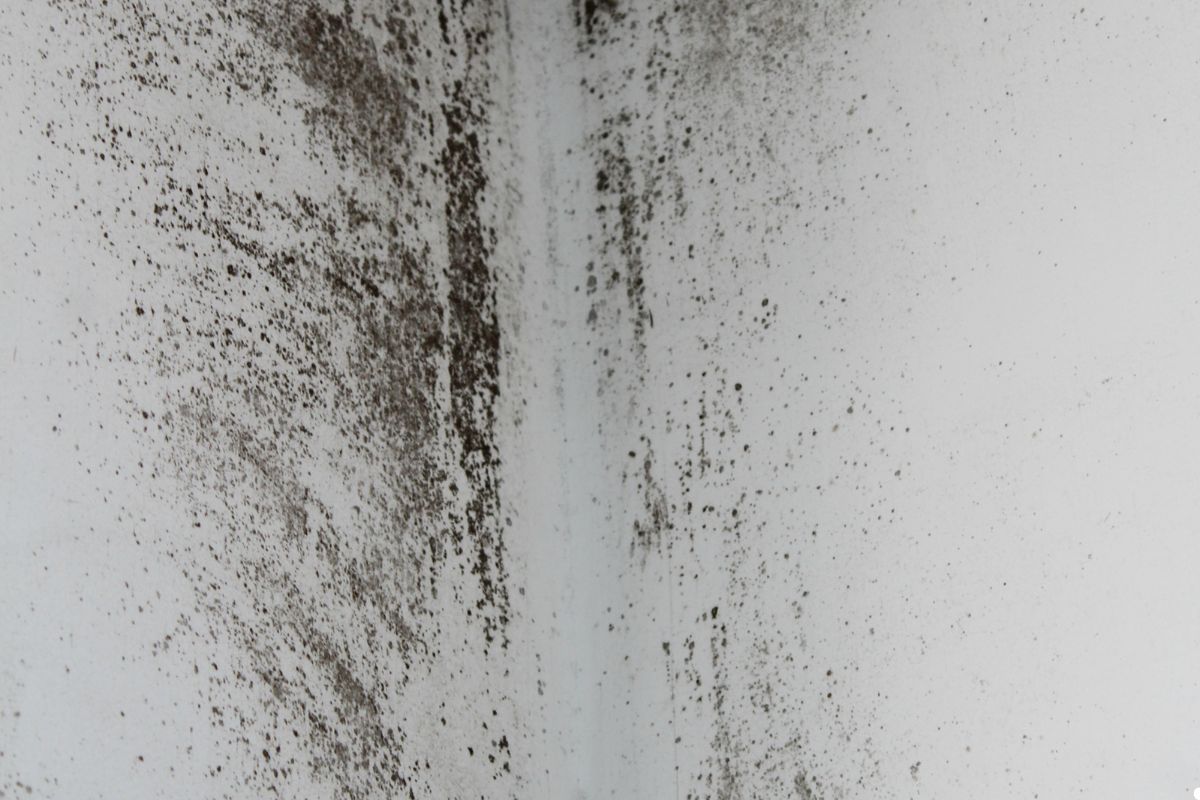
The short answer is no, it is generally not safe to live in a house with mold damage. Mold exposure can lead to various health problems, ranging from allergic reactions to more serious respiratory issues. This article will explore the dangers of mold, how to identify it, and what steps you can take to protect your health and your home. If you suspect mold in your home, call us today for a professional inspection and remediation!
What is Mold and Why is it in My House?
Mold is a type of fungus that thrives in damp, humid environments. It reproduces by releasing spores, which are tiny particles that float through the air and can land on surfaces, eventually growing into new mold colonies. Molds are a natural part of our environment, but indoor mold growth can be a serious problem.
Mold requires moisture, a food source (like wood or drywall), and a suitable temperature to grow. Leaks, high humidity, and poor ventilation are common culprits behind indoor mold infestations.
Common Types of Mold Found in Homes:
While thousands of mold species exist, some are more frequently found in homes than others. These include:
- Alternaria: Often found outdoors, but can also grow indoors in damp areas like showers and under sinks.
- Aspergillus: A very common mold that can cause a range of health problems.
- Cladosporium: This mold often grows on fabrics and wood surfaces.
- Penicillium: Another common mold type that can be found on various surfaces and can trigger allergies.
- Stachybotrys chartarum (Black Mold): Often referred to as “black mold,” this type is associated with significant health concerns, though its dangers are sometimes overblown.

Where Does Mold Grow?
Mold can grow almost anywhere moisture is present:
- Bathrooms: Showers, tubs, and leaky toilets are prime spots.
- Basements: Often damp and prone to flooding.
- Kitchens: Leaky pipes, condensation, and spills provide ideal conditions.
- Attics: Poor ventilation and roof leaks can lead to mold growth.
- Around Windows and Doors: Condensation can create a damp environment.
The Health Risks Associated with Mold Exposure
Mold exposure can cause a variety of health problems, especially for sensitive individuals. The severity of the symptoms can vary depending on the type of mold, the level of exposure, and the individual’s susceptibility.
Mold Allergies and Respiratory Issues:
- Allergic Reactions: Mold can trigger allergic reactions, causing symptoms such as sneezing, runny nose, itchy eyes, skin rashes, and hives.
- Respiratory Problems: Mold spores can irritate the lungs and airways, leading to coughing, wheezing, shortness of breath, and asthma attacks.
Long-Term Health Effects of Mold:
Prolonged exposure to mold may lead to more serious health problems, including:
- Chronic Sinus Infections: Persistent mold exposure can contribute to chronic sinus inflammation.
- Neurological Problems: Some studies suggest a link between mold exposure and neurological issues, such as headaches, memory loss, and difficulty concentrating.
- Immune System Suppression: Long-term mold exposure may weaken the immune system, making individuals more susceptible to infections.
Who is Most Vulnerable to Mold Exposure?
Certain groups of people are more vulnerable to the health effects of mold exposure:
- Infants and Children: Their developing immune systems are more susceptible.
- Elderly Individuals: Often have weakened immune systems.
- People with Respiratory Conditions: Asthma, allergies, and other respiratory illnesses can be aggravated by mold.
- Individuals with Compromised Immune Systems: People with HIV/AIDS, cancer patients undergoing chemotherapy, and organ transplant recipients are at higher risk.
How to Identify Mold Damage in Your Home
Detecting mold early can prevent further damage and health risks. Be vigilant and look for the following signs:
Visual Signs of Mold:
- Visible Mold Growth: This is the most obvious sign. Mold can appear in various colors, including green, black, brown, or white.
- Stains or Discoloration: Water stains, spots, or discoloration on walls, ceilings, or floors can indicate mold growth.
- Peeling or Bubbling Paint/Wallpaper: Moisture trapped behind paint or wallpaper can lead to mold growth.
Musty Odors and What They Mean:
A persistent, musty odor is a strong indicator of mold, even if you can’t see it. This smell is often described as earthy or stale.
Hidden Mold: Where to Look:
Mold often grows in hidden areas, making it difficult to detect. Common places to check include:
- Behind Walls: Check for water stains or discoloration on walls, especially around pipes or windows.
- Under Carpets and Flooring: Lift up carpets or floorboards to inspect for mold growth.
- Inside Cabinets and Closets: Check for dampness or musty odors.
- In HVAC Systems: Inspect air ducts and vents for mold growth.
Should You Test Your Home for Mold?
While visual inspection and identifying musty odors can often point to a mold problem, testing can provide more concrete information.
DIY Mold Testing Kits: Are They Reliable?
DIY mold testing kits are available at most hardware stores. However, their reliability can be questionable. These kits typically involve collecting a sample of mold and sending it to a lab for analysis. While they can confirm the presence of mold, they may not accurately identify the type of mold or the extent of the problem.
When to Hire a Professional Mold Inspector:
Consider hiring a professional mold inspector if:
- You suspect a significant mold problem.
- You or someone in your family is experiencing health problems that may be related to mold.
- You’re buying or selling a home and want to ensure there are no hidden mold issues.
- You’ve experienced water damage and want to assess the risk of mold growth.
- DIY testing is inconclusive or unreliable.
A professional mold inspector will conduct a thorough assessment of your home, using specialized equipment to detect hidden mold and identify the types of mold present. They can also provide recommendations for remediation.
What to Do If You Find Mold
Discovering mold in your home can be unsettling, but it’s important to act quickly and effectively to address the problem.
DIY Mold Removal: When is it Safe?
For small, localized mold problems (less than 10 square feet), you may be able to remove the mold yourself. However, it’s important to take precautions to protect yourself from exposure:
- Wear Protective Gear: Wear gloves, a mask (N-95 respirator), and eye protection.
- Ventilate the Area: Open windows and doors to provide ventilation.
- Use Mold-Killing Products: Use a commercial mold killer or a solution of bleach and water (1 part bleach to 10 parts water).
- Clean Thoroughly: Scrub the affected area with the cleaning solution and dry it completely.
Professional Mold Remediation: When to Call the Experts
For larger mold infestations (greater than 10 square feet) or if you’re experiencing health problems related to mold exposure, it’s best to call a professional mold remediation company. Professionals have the training, equipment, and experience to safely and effectively remove mold and prevent it from returning.
Preventing Mold Regrowth After Remediation:
After mold has been removed, it’s important to take steps to prevent it from returning:
- Address the Moisture Source: Fix any leaks or water damage that contributed to the mold growth.
- Improve Ventilation: Ensure adequate ventilation in bathrooms, kitchens, and basements.
- Control Humidity: Use a dehumidifier to maintain indoor humidity levels below 50%.
Mold and Your Rights as a Homeowner or Renter
Understanding your legal rights and responsibilities regarding mold is crucial, whether you are a homeowner or a renter.
Landlord Responsibilities Regarding Mold:
In many states, landlords have a legal responsibility to maintain a safe and habitable living environment for their tenants. This includes addressing mold problems that pose a health risk.
Disclosing Mold Problems When Selling:
Many states require sellers to disclose any known mold problems to potential buyers. Failing to disclose mold issues can lead to legal consequences.
State and Local Mold Regulations:
Mold regulations vary by state and local jurisdiction. Some states have specific laws addressing mold assessment, mold remediation, and disclosure. It’s important to be aware of the regulations in your area.

Preventing Mold Growth in Your Home
Prevention is the best defense against mold. By taking proactive steps to control moisture and maintain your home, you can significantly reduce the risk of mold growth.
Controlling Humidity and Moisture:
- Fix Leaks Promptly: Repair any leaks in roofs, plumbing, or windows immediately.
- Use Dehumidifiers: Run a dehumidifier in damp areas like basements and bathrooms.
- Dry Wet Areas Quickly: Clean up spills and dry wet areas within 24-48 hours to prevent mold growth.
Improving Ventilation:
- Open Windows and Doors: Regularly open windows and doors to ventilate your home.
- Use Exhaust Fans: Use exhaust fans in bathrooms and kitchens to remove moisture.
- Ensure Proper Air Circulation: Avoid blocking air vents and ensure adequate air circulation throughout your home.
Regular Home Maintenance to Prevent Mold:
- Clean Gutters Regularly: Clear gutters of leaves and debris to prevent water from backing up and causing leaks.
- Inspect for Leaks: Regularly inspect your home for signs of leaks or water damage.
- Use Mold-Resistant Products: Use mold-resistant paint and building materials in damp areas.
Living Safely in a Home with a History of Mold
Even after mold has been removed, it’s important to remain vigilant and take steps to prevent it from returning. Regular inspections, proper ventilation, and moisture control are essential for maintaining a healthy living environment. Remember, your health and safety are paramount.
Frequently Asked Questions About Mold
Is all mold toxic?
Not all mold is toxic, but all mold can potentially cause health problems for sensitive individuals. Some types of mold, such as Stachybotrys chartarum (black mold), are known to produce mycotoxins, which can be harmful to human health. Protect your health from harmful mold! Contact us today for a professional inspection.
How quickly can mold grow?
Mold can grow within 24-48 hours in the right conditions (moisture, food source, and suitable temperature).
Can mold make you sick?
Yes, mold exposure can cause a variety of health problems, including allergic reactions, respiratory problems, and other health issues.
Does homeowners insurance cover mold remediation?
Homeowners insurance coverage for mold remediation varies depending on the cause of the mold growth. Generally, if the mold is caused by a covered peril (such as a burst pipe), insurance may cover the cost of remediation. However, mold caused by neglect or lack of maintenance is typically not covered.
What is the best way to clean mold?
The best way to clean mold depends on the size of the affected area and the type of surface. For small areas, you can use a commercial mold killer or a solution of bleach and water. For larger areas or if you’re experiencing health problems, it’s best to call a professional mold remediation company. Call us today for expert mold removal services!

